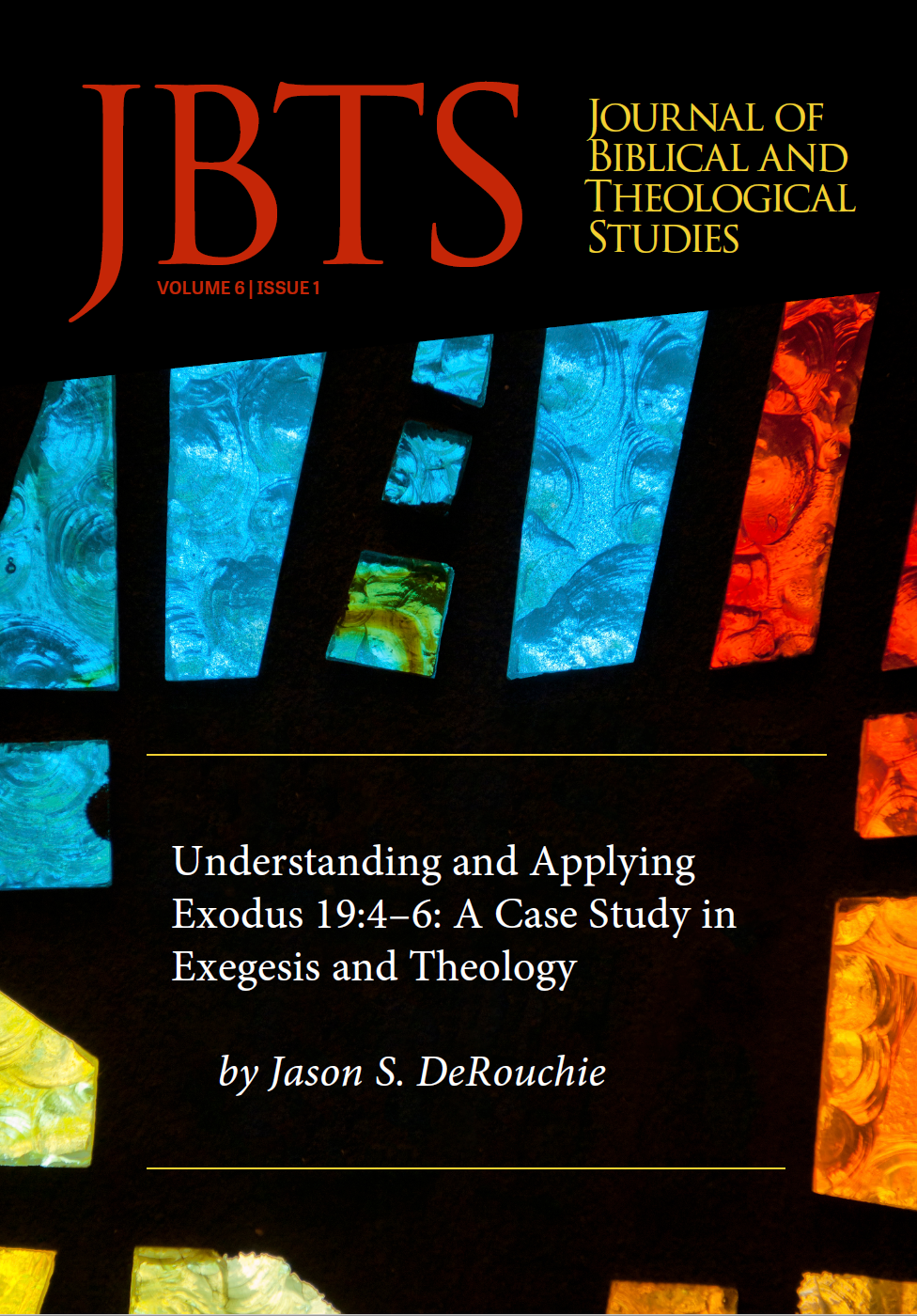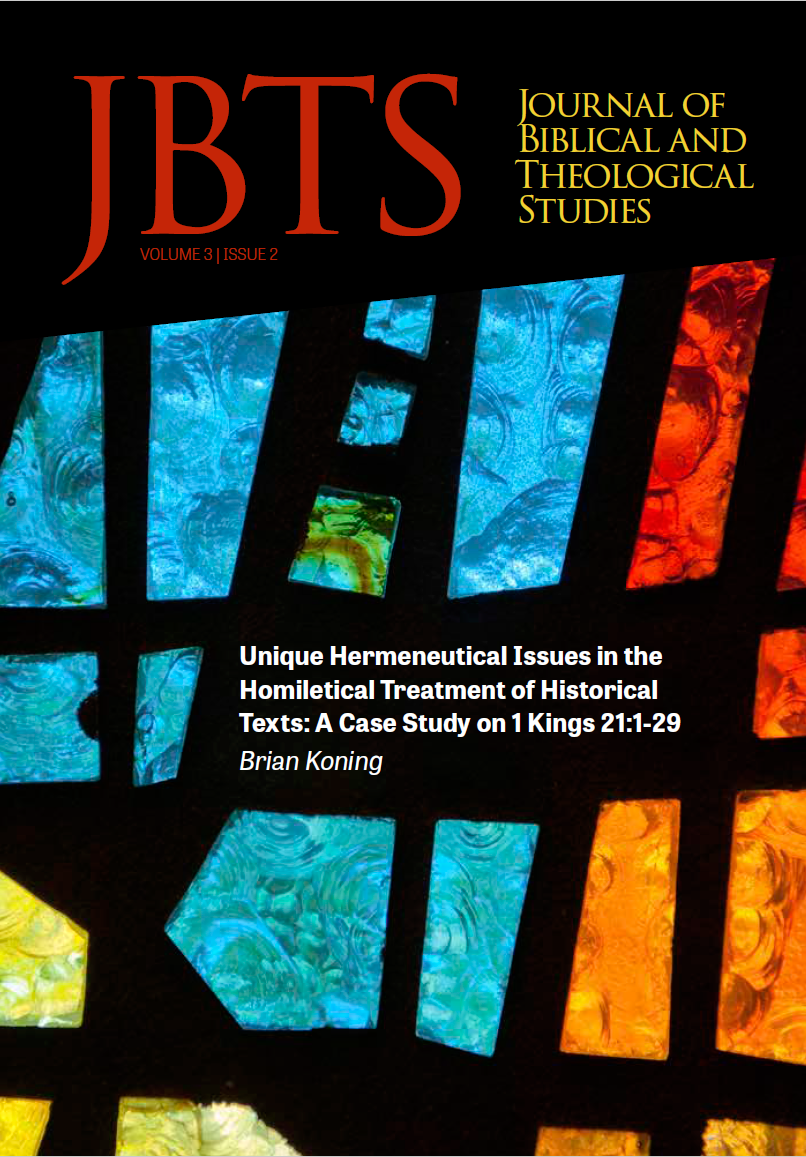Understanding and Applying Exodus 19:4-6: A Case Study in Exegesis and Theology Jason S. DeRouchie Research Professor of Old Testament and Biblical Theology Midwestern Baptist Theological Seminary [email protected] / https://jasonderouchie.com Perhaps more than any other single text, Exodus 19:4–6 provides the Bible’s clearest and simplest snapshot of God’s revealed purpose for the old covenant. This essay seeks to interpret this passage within its immediate and broader biblical context, understanding and applying it as the Christian Scripture God intended (Rom 15:4; 1 Cor 10:11; 2 Tim 3:16–17; 1 Pet 1:12). The study also supplies a case study in exegetical and theological inquiry following the twelve steps outlined in my book, How to Understand and Apply the Old Testament.[1] Recognizably, the nine steps of exegesis and three steps of theology are all interrelated, and distinguishing them is somewhat artificial to the process of interpreting the Bible. Nevertheless, using a single passage to walk through the twelve steps should help students understand better the various aspects of exegesis and theology that are necessary for rightly handling God’s word of truth (2 Tim 2:15). Read the full article: Understanding and Applying Exodus 19:4-6: A Case Study in Exegesis and Theology [1] Jason S. DeRouchie, How…
Articles
Unique Hermeneutical Issues in the Homiletical Treatment of Historical Texts: A Case Study on 1 Kings 21:1-29 Brian Koning Brian M. Koning (PhD Student, Midwestern Baptist Theological Seminary) is an Adjunct Professor of Theology at Grand Canyon University Abstract: Any preaching of the Old Testament necessarily must face historical narrative passages. Properly handling these passages though presents certain unique difficulties, and often the texts are handled with substandard care. Traditional Aristotelian three-point sermons seem arbitrary or forced upon the text and do not capture the heart of the message. There is tension in handling historical narratives between moralizing the story to bring it from “then” to “now”, and treating it as a merely historical item of note. This article seeks to study the elements and methods of hermeneutics unique to historical texts with an eye towards proper preparation for homiletical use. What follows seeks to be a distillation of methodology on hermeneutics in general, towards a direct application to historical texts. It will be argued that to rightly handle the text, expositors must appreciate the text as both historical and redemptive in nature. Exegeting from that starting point will lead the expositor to work along the textual, epochal, and canonical…
Exegesis by Story: The Disciplined Imagination of the World of Scripture Mike Baird Mike Baird is Professor Emeritus, College of Theology, Grand Canyon University, Phoenix, Arizona. Abstract: This paper is about a method of exegesis, an exegetical procedure. It addresses the issue of reading the text in a way that respects and takes seriously all three traditional foci of interpretation, the author, the text, and the reader in one holistic approach to interpreting the text. Thus, the core issue is the focus of exegesis of the text (Is it the world of the reader or of the author?) and the locus of meaning (Is it in the text or in the mind of the reader?). Exegesis should focus on the lifestory of the text (or passage of Scripture) as the primary context. The life-story is the reconstructed story behind and revealed in the passage. The life-story provides the common ground for the author, text, and reader to interact in a holistic way in the work of the exegete. Underlying this method is the assumption that the passage represents and reveals the world of the ancient community of faith, which can be imaged in such a way that the modern reader…






